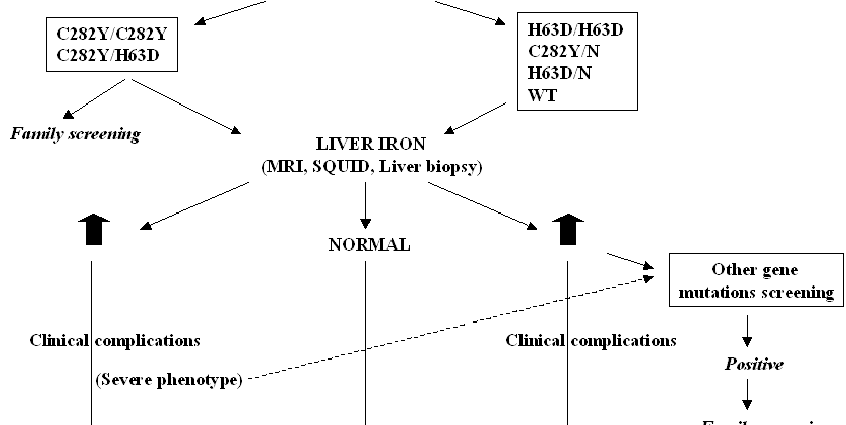Diagnosis of hemochromatosis
The diagnosis can be made during a screening or when the patient has clinical signs suggestive of the disease.
Given the frequency and severity of the disease, it is justified to screen for the disease in people whose family member has hemochromatosis. This screening is done by determining the transferrin saturation coefficient and a genetic test in search of the responsible genetic mutation. A simple blood test is enough:
- an increase in the level of iron in the blood (greater than 30 µmol / l) associated with an increase in the saturation coefficient of transferrin (protein ensuring the transport of iron in the blood) greater than 50% makes it possible to make the diagnosis of sickness. Ferritin (the protein that stores iron in the liver) is also increased in the blood. The demonstration of iron overload in the liver no longer requires the practice of a liver biopsy, nuclear magnetic resonance imaging (MRI) is the examination of choice today.
- above all, the demonstration of the mutation of the HFE gene constitutes the examination of choice for the diagnosis of the disease.
The other additional examinations make it possible to assess the function of other organs that may be affected by the disease. An assay for transaminases, fasting blood sugar, testosterone (in humans) and an ultrasound of the heart can be performed.
Genetic aspects
Risks of transmission to children
The transmission of familial hemochromatosis is autosomal recessive, which means that only children who have received the mutated gene from their father and mother are affected by the disease. For a couple who have already given birth to a child affected by the disease, the risk of having another affected child is 1 in 4
Risks to other family members
First-degree relatives of a patient are at risk of either carrying the altered gene or of having the disease. This is why, in addition to determining the transferrin saturation coefficient, they are offered a genetic screening test. Only adults (over 18 years of age) are concerned by the screening because the disease does not manifest in children. In cases where a person is affected in the family, it is therefore advisable to consult a medical genetics center for a precise assessment of the risk.










